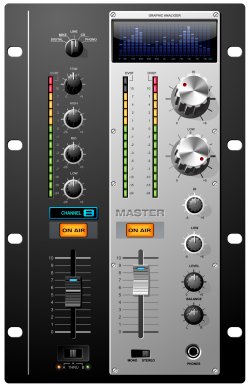If you're building a SaaS (Software as a Service) startup you're in great company. Most software entrepreneurs today are taking this approach -- including me. Below are some simple insights that I've learned in the process of being in the trenches with my own startup. 
Insights On SaaS Startups
1. You are financing your customers. Most SaaS businesses are subscription-based (there’s usually no big upfront payment). As a result, sales and marketing costs are front-loaded, but revenue comes in over time. This can create cash-flow issues. The higher your sales growth, the larger the gap in cash-flows. This is why fast-growing SaaS companies often raise large amounts of capital. My marketing software company is an example.
2. You’ve got operating costs. In the shrinkwrapped software business, you shipped disks/CDs/DVDs (or made the software available to download). There were very few infrastructure costs. To deliver software as a service, you need to invest in infrastructure — including people to keep things running. Services like Amazon’s EC2 help a lot (in terms of having flexible scalability), but it still doesn’t obviate the need to have people that will manage the infrastructure. For a startup, the people cost to manage the IT stuff can be significant (since the team is very small). So, even though hardware and infrastrucutre are cheap, managing it can take a significant percentage of the startup’s time.
3. It Pays To Know Your Funnel: One of the central drivers in the business will be understanding the shape of your marketing/sales funnel. What channels are driving prospects into your funnel? What’s the conversion rate of random web visitors to trial? Trial to purchase? Purchase to delighted customer? As a SaaS startup grows, a lot of leverage can be found by understanding the shape of the funnel and removing the “leaks” (i.e. where are you losing business)? For example, if a lot of people are signing up for the trial, but very few convert to paying customers, you should dig into what the early usage pattern is. Are people logging on at all? If so, where are they getting stuck? Remove the friction that is keeping customers from getting value and you’ll unlock some revenue. Do this at all stages of the funnel (focusing on the easy stuff first).
4. Install Knobs and Dials In The Business: One of the great things about the SaaS business is you have lots of aspects of the business you can tweak (examples include pricing, packaging/features and trial duration). It’s often tempting to tweak and optimize the business too early. In the early days, the key is to install the knobs and dials and build gauges to measure as much as you can (without driving yourself crazy). Get really good at efficient experimentation (i.e. I can turn this knob and see it have this effect). As with most experiments, don’t change too much at the same time (even though you think several different things will all have positive effects). The reason is simple: If you change more than one thing, you won’t really know what really happened. Unless you have lots of data points, simple tests are usually better.
5. Value the Visibility: One of the big benefits of SaaS businesses is that they often operate on a shorter feedback cycle. You’re dealing in days/weeks/months not in quarters/years/lifetimes. What this means is that when bad things start to happen (as many experienced during the start of the current economic downturn), you’ll notice it sooner. This is a very good thing. It’s like driving a fast car. Good breaks allow you to go faster (because you know you can slow down if conditions require). But, great visibility helps too — you can better see what’s happening around you, and what’s coming. The net result is that the risk of going faster is mitigated.
Running a SaaS startup is a lot of fun. There are so many more things under your control than the traditional shrink-wrapped business. Use this to your advantage. Keep your feedback cycles short, maniacally track the data and invest in continual (but cheap) experimentation. In the long term, these things will give you a huge advantage.
What have you learned while building your SaaS startup?